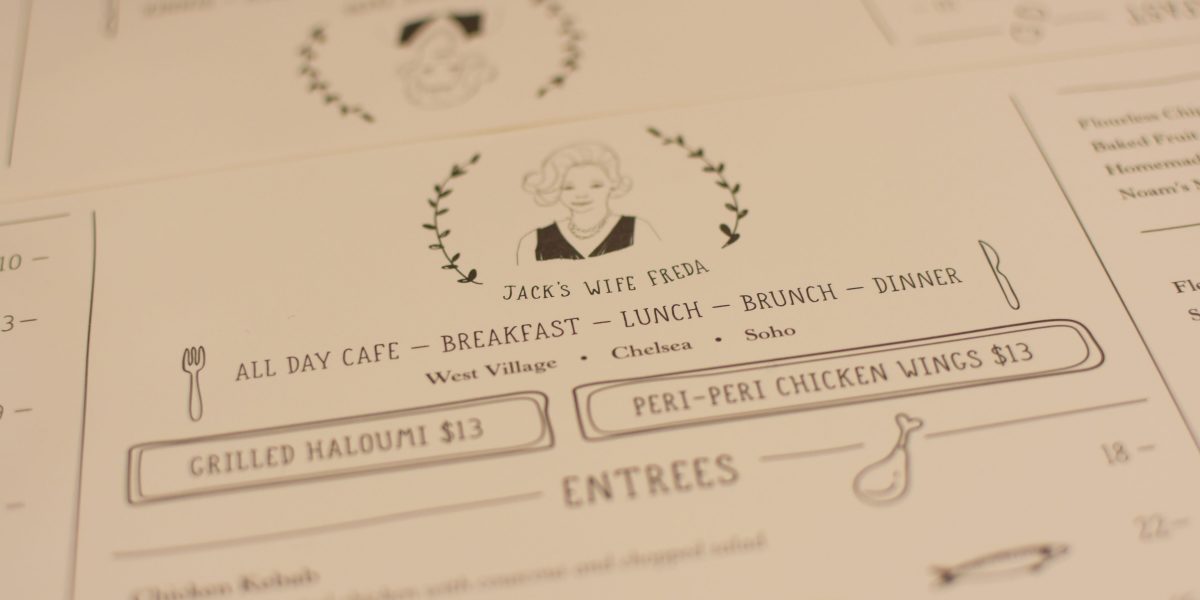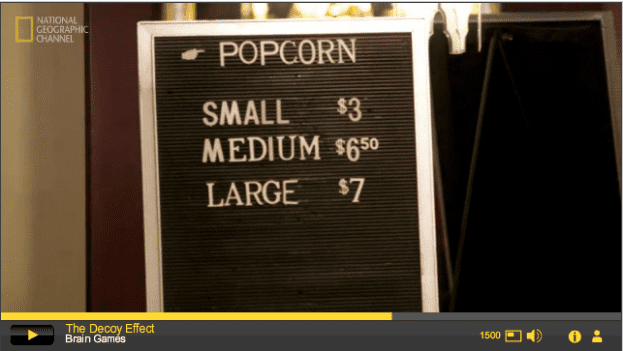The next time you go out to eat, pay close attention to the menu – the psychology at play could deliver your next marketing strategy.
In fact, once you select what you plan to order, take a few seconds to consider…
Is this what I really what, or did the menu cause me to make this choice?
You see, menus are filled with psychological strategies designed to get you to order certain items. Many times, it’s the most profitable entrées (but not necessarily the most expensive ones).
One of the most common marketing psychology strategies – and one you can immediately apply to your marketing – is to use a pricing decoy.
The idea is simple:
Use a high-priced item or two to make other options seem more affordable.
The typical consumer has a hard time making decisions about value, so introducing decoy prices can help clarify confusion.
For example, once you see a $175 burger on a menu, the $50 white-truffle lobster roll suddenly seems reasonable.
Need more people buying your $2,500 monthly coaching program? Promote it with your one-day, in-person strategy sessions that start at $12,000.
Get the idea?
Apple applied this concept to perfection when they introduced the Apple Watch.
The most inexpensive version of the watch (the Apple Watch Sport) was priced at $349 – a considerable sum when compared to your basic Timex wrist wear. However, it’s sort of a bargain when you consider the 18-karat rose gold Apple Watch Edition, priced up to $17,000.
And here’s the thing…
As reported by Wired magazine, there’s no difference between the base-level Apple Watch Sport and the Apple Watch Edition in terms of what they can actually do – and for the watch to actually work, it has to be paired with an iPhone (a whole other expense).
Interesting, isn’t it?
From a logical perspective, you might wonder why anyone would pay $17,000 for an Apple Watch when a comparable version is available at a fraction of that price…
Remember, though, some people are always willing to pay for the highest level of whatever you offer.
The truth is, if you’re not providing an option for high-end consumers right now, you’re missing out on easy profits.
Okay, here’s another menu tip to consider:
Menu engineers (yep, it’s a real job) use marketing psychology to design menus based on how we remember items. You see, your mind often views a menu like a list, similar to the one you use at a grocery store.
Let’s say you drive to your local grocery store to pick up 7 items, but you forgot your list. Which items are the easiest to remember?
The ones at the beginning.
Right?
After all, you see and often repeat those items in your mind. This concept is based on what psychologists call “the primacy effect.”
On menus, the items restaurant owners want you to focus on are frequently placed in the upper-right quadrant. That’s where your eyes naturally gravitate – so you see them the most often.
In fact, the same holds true for marketing pieces (this is one reason you should request your print ad placements on a right page, and as close to the top as possible).
Again, the content your prospects see first is most likely to be remembered.
In your marketing materials, the first items are usually the headline and first sentence, so spend considerable time crafting content that’s memorable.
A big benefit… A thought that piques curiosity… A special offer… An interesting idea… An unknown fact… A surprise promise…
You have many options – just stay away from the plain and mundane.
Now, if you want to take the decoy pricing concept to the next level, try the decoy effect. In these instances, instead of using a single price as a decoy, you put three prices together.
Here’s a great example: http://natgeotv.com.au/videos/brain-games/the-decoy-effect-6E9F6FE5.aspx
When you watch this video, you’ll see how easy it is to get people to spend more money by simply helping them recognize value. All you have to do is properly price your offerings.
I took a cue from the above clip and helped a client re-price his packages for immigration services. Here’s how he previously priced his offerings:
• $335 for a basic consultation
• $1,665 for a DIY visa program
• $3,885+ for a done-for-you visa program
• $12,000+ for a done-for-you business visa program
So, which offer looks like the best deal to you?
Tough to tell, isn’t it?
Since he targets individuals with his marketing, I first suggested removing the business option from his price sheet. After all, visas for businesses require a different marketing message – it’s a separate audience.
In addition, the starting business price instantly seems expensive because you naturally compare it to the individual offerings.
Now, with the business option gone, we’re left with three prices: $335, $1,665, and $3,885.
The client wants to attract more people to his done-for-you visa program at $3,885, so I recommended increasing the price for his DIY program.
If you double that fee (to $3,330), the done-for-you option suddenly looks more appealing.
After all, you can do all the immigration paperwork yourself (and deal with the hassle and hope you complete it correctly) for $3,330… Or you can have an attorney – who handles the immigration process every day and knows the system – complete the task for a mere $500 more.
Which option would you choose?
And let’s not forget…
If someone still wants the DIY option, my client is now getting twice the price he used to.
He’s winning either way.
And the fact is, when you apply the decoy effect to your pricing, you’ll win too. Marketing psychology works!
By Tom Trush

